Top six of from the Edward Wrangham Collection of Japanese Art at Bonhams London, 19 July 2021
Lot 105. A fine and rare black-lacquer three-case saya (sheath) inro, By Kanshosai Toyo, 19th century. Estimate £7,000 - £8,000. Sold for £ 21,500 (€ 24,842). © Bonhams 2001-2021
The saya of roiro, lacquered on either side in shibuichi-nuri (simulated shibuichi) with the maru ni juji mon (crest of a cross within a circle), the emblem of the Shimazu Family, the inner three-case inro with a rich roiro ground finely embellished with an erotic scene of a samurai ravishing a courtesan from behind, her wad of kaishi (pocket paper) falling on the ground, probably after a ukiyo-e print design by Utamaro, in gold, silver and coloured togidashi maki-e, the interior of nashiji with gold fundame shoulders and rims, signed Toyo with a kao; with a silvered-metal ojime, unsigned. 6cm (2 3/8in) high.
Provenance: Eskenazi Ltd., London, 1989.
Wrangham collection, no.1975.
Lot 136. A black-lacquer three-case inro, By Shibata Zeshin (1807-1891), 19th century; 7cm (2¾in) high. Estimate £25,000 - £30,000. Sold for £ 19,000 (€ 21,953). © Bonhams 2001-2021
Of rectangular Chinese ink-cake form decorated with intentionally carved chips at the edges, carved to one side with a Chinese archer and his attendant, the reverse inscribed Dai kokko (Great National Perfumery), signed Zeshin; with an ivory ojime; and a black lacquer netsuke in the form of a partly used ink-cake, carved in relief with two crabs and with an engraved inscription, signed Zeshin.
Provenance: Lt.Col. J. B. Gaskell collection, no.565.
F. A. Richards collection, purchased at Sotheby's, London, 1964.
Wrangham collection, no.336.
Published: the Catalogue of the Lt.Col. J. B. Gaskell collection, Glendining & Co. Ltd., London, 1919/20, no.444 (illustrated).
The International Netsuke Society Journal, vol.17, no.1, p.41.
Exhibited: Ashmolean Museum, Oxford, 1972, no.60.
Meiji Japanese Art in Transition, the Haags Gemeentemuseum, The Netherlands, 1987, no.179.
Note: The inscription is taken from an illustration in a Chinese woodblock-printed book by Fang Yulu, titled Fang Shi Mopu, (A Compendium of Ink-cake Designs), published circa 1588.
Lot 148. A fine gold-and-black-lacquer five-case inro By Hon'ami Shoetsu, after Yamaguchi Soken, 19th century; 9.5cm (3¾in) high. Estimate £14,000 - £16,000. Sold for £ 12,750 (€ 14,763). © Bonhams 2001-2021
The tall vertical body with a roiro ground lacquered with a continuous scene of a girl gazing at her reflection in the Kagami-ishi (Mirror Rock), a tall flowering cherry tree beside a rushing stream on the reverse, its branches extending into cloud bands above, all in gold and slight-coloured takamaki-e and togidashi maki-e with profuse highlights of kirikane, the ends of fundame and the interior of nashiji, signed Hon'ami Shoetsu with a seal Shoetsu; with a solid lacquer multi-coloured ojime in the form of a shojo (red-haired drunken sprite), unsigned.
Provenance: F. A. Richards collection, purchased in Japan, 1914, sold at Sotheby's, London, 1964.
Graham Gemmell, London, 1989.
Wrangham collection, no.1965.
Published: E. A. Wrangham, The Index of Inro Artists, Alnwick, Harehope Publications, 1995, p.246, Shoetsu, Hon'ami.
Note: Located to the north of the famous Kinkakuji Temple in Kyoto, the Kagami-ishi (also called the Kagami-iwa) was famed for its remarkable reflective and diagnostic properties. A image similar to that on the present inro is shown in Miyako meisho zue (Illustrations of Famous Places in the Capital), published in 1780. According to the picture caption, 'The Kagami-ishi is a rock that clearly reflects anything placed in front of it . . . It is large with a bright surface and often reflects a person's internal organs; if there is anything wrong it will show up clearly.' (1) Both Henri L. Joly and, later, V. F. Weber refer to a celebrated painting of this subject by Yamaguchi Soken (1759-1818). The present whereabouts of this work are unknown but it is almost certainly the one published in Nihon bijutsu gaho in 1899; Weber also reproduces a suzuribako (writing box) with the same design. (2)
1. For the Miyako meisho zue, see Takemura Toshinori (ed.), Nihon meisho fuzoku zue (Traditional Topographical Works of Japan), Tokyo, 1981, vol. 8, pp.195-6. For an online reproduction, see:
2. See H. L. Joly, Legend in Japanese Art, London, Kegan Paul, Trench, Trubner & Co., 1908, p.500, V. F. Weber, Ko-ji Ho-ten, Dictionnaire à l'usage des amateurs et collectionneurs d'objets d'art japonais et chinois, Paris, 1923, vol.2, p.169, fig.728, and Nihon bijutsu gaho, vol.5, no.12 (25 May 1899), 'Maiden before a Stone Mirror', accessible at http://www.tobunken.go.jp/materials/gahou/page/42, where both Soken's name ('Sojun') and the date of his death (1804) are inaccurate.
Lot 219. A rare lacquered wood koro (incense burner) in the form of an elephant, Attributed to Ogawa Haritsu (Ritsuo, 1663-1747), 18th century; 7cm (2¾in) wide. Estimate £6,000 - £8,000. Sold for £ 11,475 (€ 13,286). © Bonhams 2001-2021
Formed from soft wood, standing on all fours, facing ahead with its trunk raised, its body lacquered dark brown and carved with an elaborate tasselled cloth over its back and tied beneath, lacquered in red with formal designs, the copper liner surmounted by a bronze cover finely pierced with scrolling flowerheads; unsigned.
Provenance: Nihon Token, London, 1988.
Wrangham collection, no.1880.
Lot 75. A black-lacquer three-case inro By Koma Yasutada, 19th century; 20.4cm x 27cm (8in x 10 5/8in). Estimate £4,000 - £5,000. Sold for £ 11,475 (€ 13,286). © Bonhams 2001-2021
The wide rectangular body with a sparse nashiji ground lacquered with five grey herons on a weeping willow branch caught in a rain storm, in gold and silver takamaki-e and e-nashiji, with kirikane details, the design continued on the reverse, showing another heron about to alight on a branch, the interior of nashiji; signed Koma Yasutada saku.
Provenance: purchased at Sotheby's London, 1981.
Wrangham collection, no.1529.
Note: A catalogue entry from a previous auction sale mentions a note by a former owner stating that the inro was made for the Daimyo of Gifu. It is uncertain however, if this is part of the set described in lot 270 from The Edward Wrangham Collection of Japanese Art: Part I sale, 9 November 2010.
Lot 79. A fine gold-lacquer three-case inro By Koma Kyuhaku, 19th century; 7.3cm (2 7/8in) wide. Estimate £14,000 - £16,000. Sold for £ 10,200 (€ 11,810). © Bonhams 2001-2021
The rounded square body with a subdued kinji ground lacquered with a continuous mountainous landscape showing soaring peaks and pine trees among rocky cliffs, a temple seen in the deep cleft betweeen two hills, in sumi-e togidashi maki-e, the interior of nashiji with gold fundame shoulders and rims; signed Koma Kyuhaku saku.
Provenance: purchased at Sotheby's, London, 1972.
Wrangham collection, no.1159.
Published: E. A. Wrangham, The Index of Inro Artists, Alnwick, Harehope Publications, 1995, p.157, Kyuhaku IV, Koma.
Note: The work has been attributed to Koma Kyuhaku IV, who died in 1795 and was appointed lacquerer to the shogun Tokugawa Ieharu in 1786.
Bonhams. The Last Treasures from the Edward Wrangham Collection of Japanese Art, London, 19 Jul 2021

/https%3A%2F%2Fprofilepics.canalblog.com%2Fprofilepics%2F1%2F0%2F100183.jpg)
/https%3A%2F%2Fstorage.canalblog.com%2F03%2F02%2F119589%2F96711876_o.jpg)
/https%3A%2F%2Fstorage.canalblog.com%2F11%2F31%2F119589%2F94773502_o.jpg)
/https%3A%2F%2Fstorage.canalblog.com%2F20%2F83%2F119589%2F94772815_o.jpg)
/https%3A%2F%2Fstorage.canalblog.com%2F26%2F72%2F119589%2F75604929_o.jpg)
/https%3A%2F%2Fstorage.canalblog.com%2F59%2F60%2F119589%2F26458628_o.jpg)






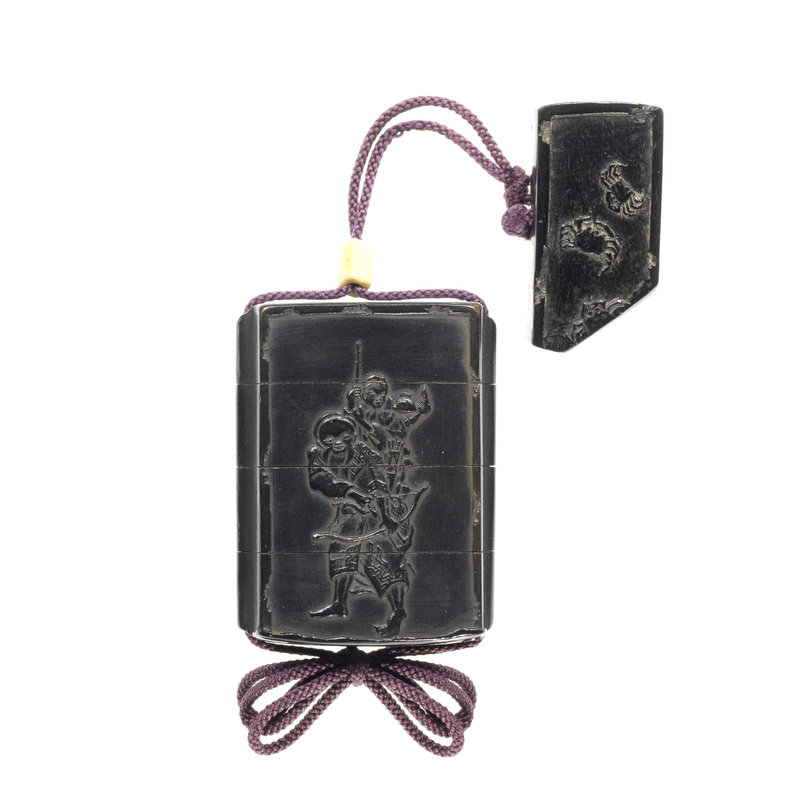
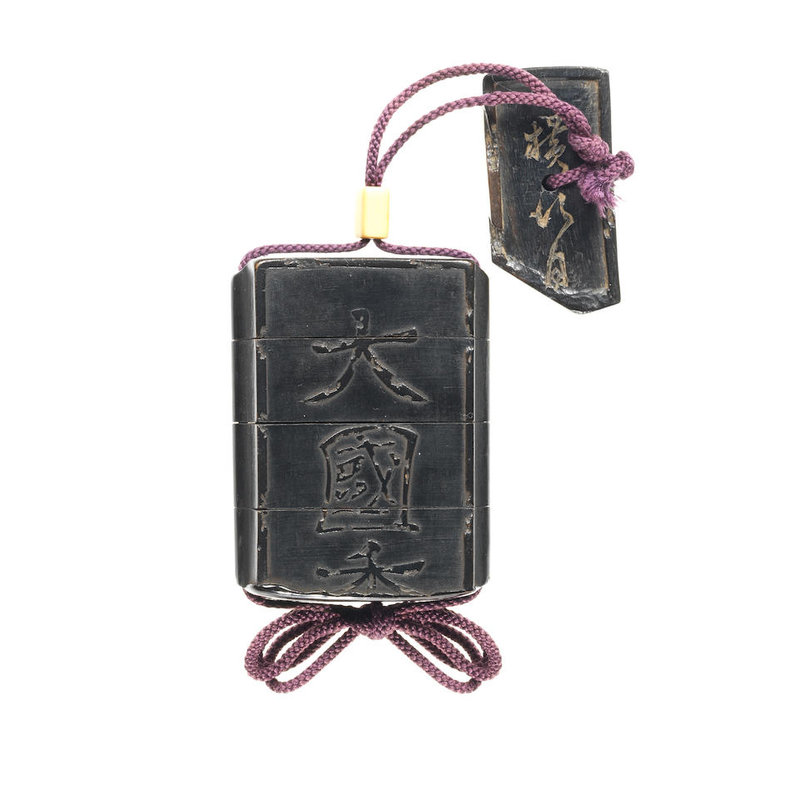

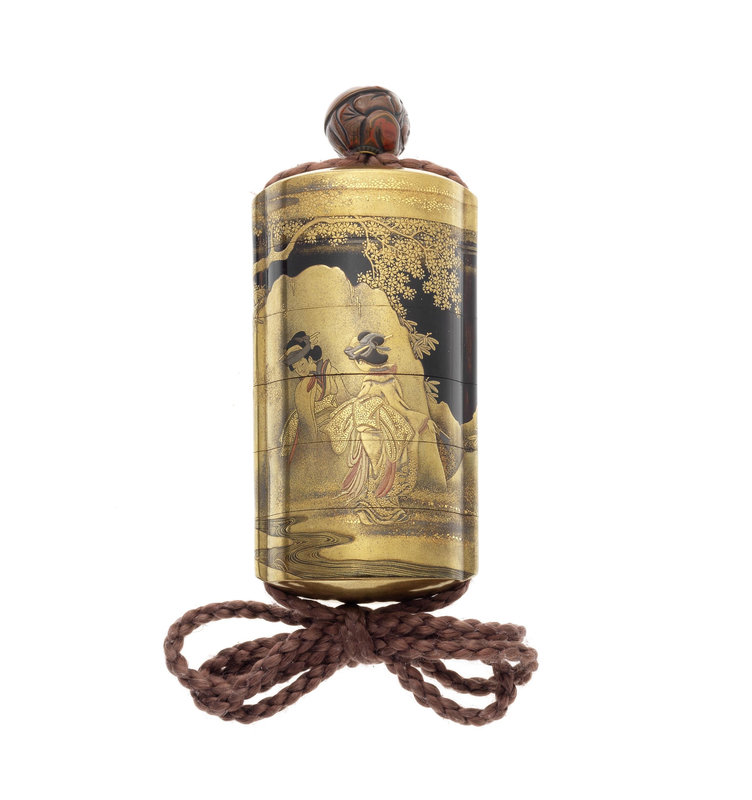


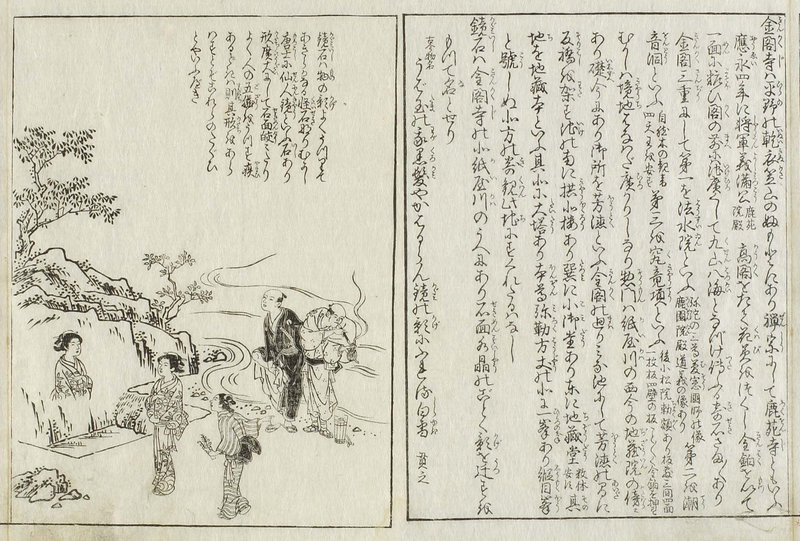
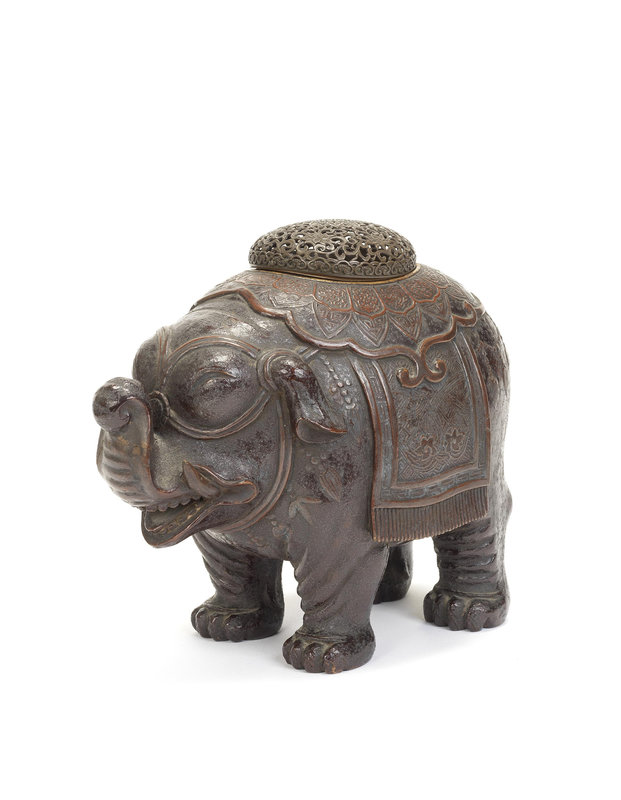



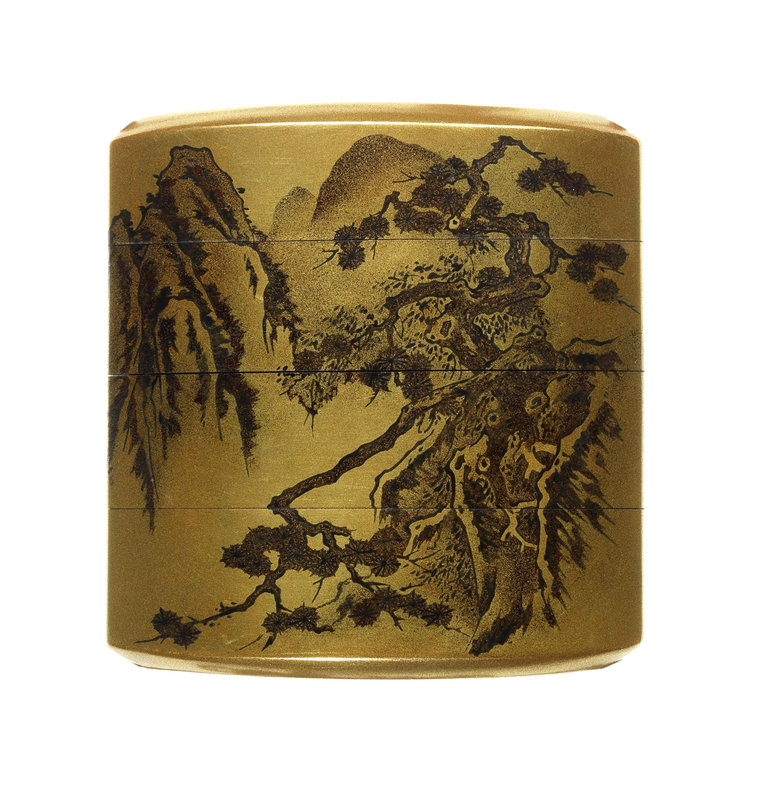




/http%3A%2F%2Fstorage.canalblog.com%2F70%2F04%2F119589%2F129847169_o.jpg)
/http%3A%2F%2Fstorage.canalblog.com%2F22%2F99%2F119589%2F126006674_o.jpg)
/http%3A%2F%2Fstorage.canalblog.com%2F85%2F12%2F119589%2F122416041_o.jpg)
/http%3A%2F%2Fstorage.canalblog.com%2F16%2F89%2F119589%2F75026122_o.jpg)